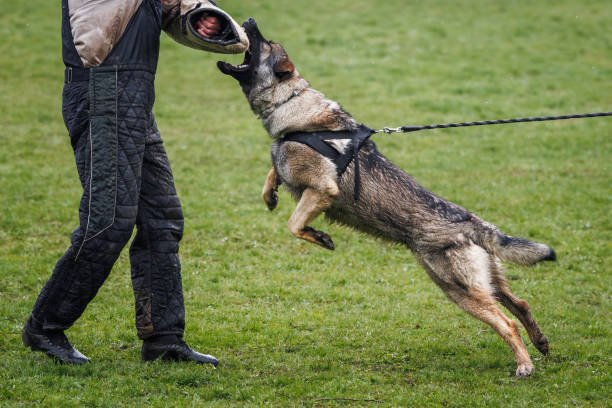
Aggressive dog board and train is a topic that many dog owners find themselves needing to understand. This article aims to shed light on this crucial aspect of dog training. We delve into the world of aggressive dog board and train programs, exploring their importance, effectiveness, and the role they play in transforming the behavior of aggressive dogs. So, whether you’re a seasoned dog owner or a newbie, this guide will provide valuable insights into managing and training aggressive dogs.
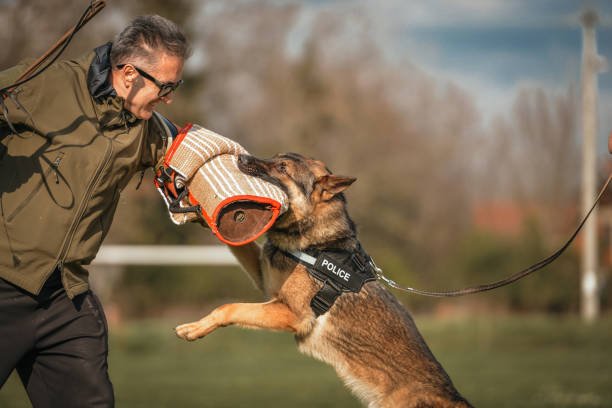
Aggressive dogs board and train involves the identification of the causes and the consequences of aggression in your furry pal.
It is vital to learn to pick up on body language cues. Watch for signals like growling, bared teeth, stiffness, raised hackles. Triggers for aggression are also the main thing to understand. Regardless of it being territorial, fear based or from resource guarding, what triggers your dog must be well understood. Not only that, it is crucial to distinguish fear aggression, when the dog’s reaction was caused by fear, from dominance aggression, when the dog shows dominance over people or other animals.
Aggressive actions can affect a dog’s emotional state and quality of life problematically. It can lead to anxiety, stress, and even physical damage. The untreated aggression not only endangers your dog but also others. Not only that, it can cause a dilemma in the relationship between the pet and the owner, sometimes making the interactions difficult and stressful.
By grasping this information, then you can follow up with the suitable measures to help your dog to overcome his aggression, whether through training or seeking professional help.
Be aware that boarding and training is a word you may have come across once you’ve dealt with an aggressive dog. But what is it in fact and how does it work?
Enum boards and training, or more conveniently described as doggy boot camp, entails sending your dog over to a professional trainer for a concentrated and rigorous training. This period the trainer is going to cooperate with your dog to deal with the behavioral problems, for instance, aggression.
The course lasts about 3 weeks and involves structured lessons, dog socialization, and behavioral pattern correction. An experiential method adopted helps in the development of specific skills under a secured area.
Board and training for aggressive dogs is one of the key advantages because the dogs are getting the intense and focused attention of a professional trainer. When trainers have handled unusual behaviors and are able to apply customized strategies to effectively address, it makes the training process easy and fruitful.
Further, the organized setting may assist in elimination of the probable triggers of aggression and provide a chance to have positive reinforcers and socialization with other dogs and humans in a safe environment.
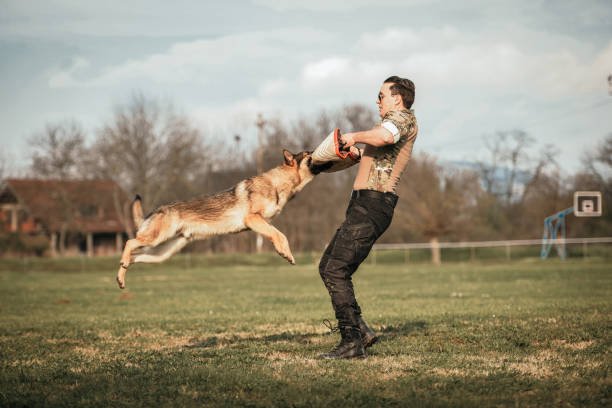
Before joining a board and train program for your aggressive dog, you need to do a thorough research and find the best one.
Ensure that the trainer has had some previous experience and is skilled in dealing with dogs that can be aggressive. Use reviews, suggestions, and the actual visit of the facility so that you will be assured that it’s clean, safe, and arrogant in all aspects.
Trainers have different training methods and so it is important to understand their approach and make sure it is in line with your goals and values. Positive reinforcement-based approaches generally work well and are safe at the same time that these methods will not create problems in the attachment bond between you and your dog.
Each dog is unique, and what works for one may not work for another. A good board and train program will tailor the training to your dog’s specific needs, focusing on addressing their aggression while also considering any underlying issues or temperament traits.
The board and train approach can be an effective option for addressing aggression in dogs. By choosing a reputable program and working closely with a professional trainer, you can give your dog the tools they need to overcome their aggressive behavior and live a happier, more balanced life.
Aggressive dogs board and train programs often face various challenges. Here’s how to tackle them effectively:
Consistency is crucial in training aggressive dogs. Here’s how to maintain it:
By addressing specific aggressive behaviors and maintaining consistency in training, you can help your aggressive dog become a well-behaved and happy companion.
After completing an aggressive dog board and train program, it’s essential to continue supporting your dog’s progress at home. Here’s how:
Implementing learned techniques: Reinforce the training your dog received during the board and train program by consistently applying the techniques at home. Practice commands and behaviors in various situations to ensure your dog retains what they learned.
Maintaining a structured routine: Establish a consistent daily routine for your dog that includes regular exercise, feeding times, and training sessions. Structure provides stability and reinforces positive behaviors.
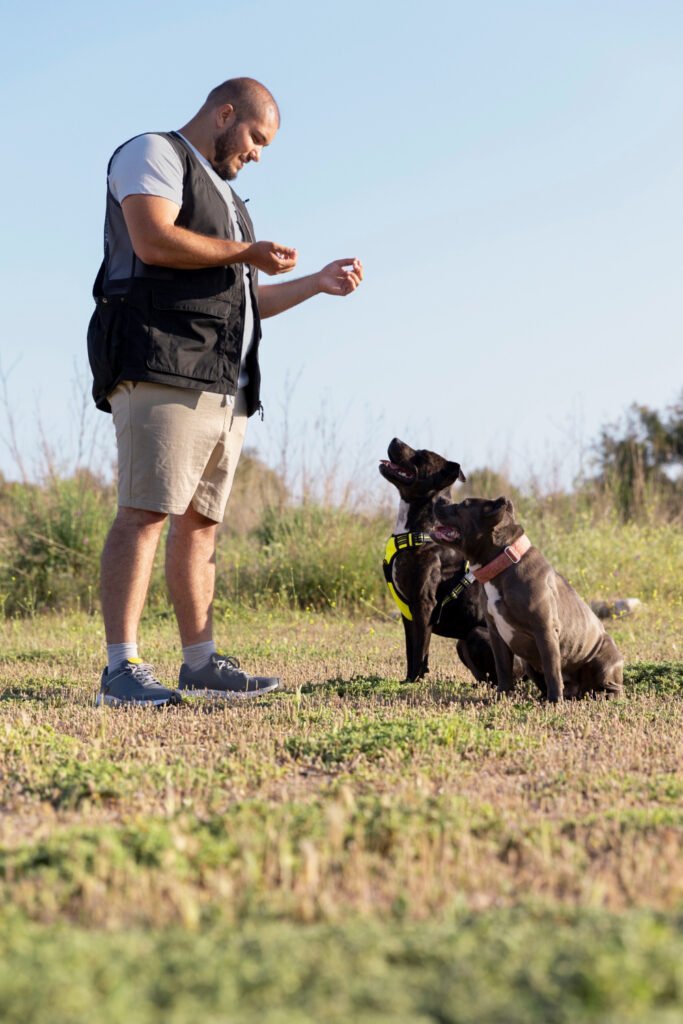
To prevent regression and maintain progress, it’s crucial to recognize and manage triggers that may lead to aggressive behavior:
Strategies for avoiding triggers: Identify situations or stimuli that provoke aggression in your dog, such as encountering other dogs or loud noises. Whenever possible, avoid these triggers or gradually expose your dog to them in a controlled manner.
Desensitization and counterconditioning exercises: Gradually desensitize your dog to triggers by exposing them to the stimuli at a low intensity and rewarding calm behavior. Counter-conditioning involves associating the trigger with positive experiences to change your dog’s emotional response.
By continuing training at home and proactively managing triggers, you can support your dog’s progress after completing an aggressive dog board and train program.
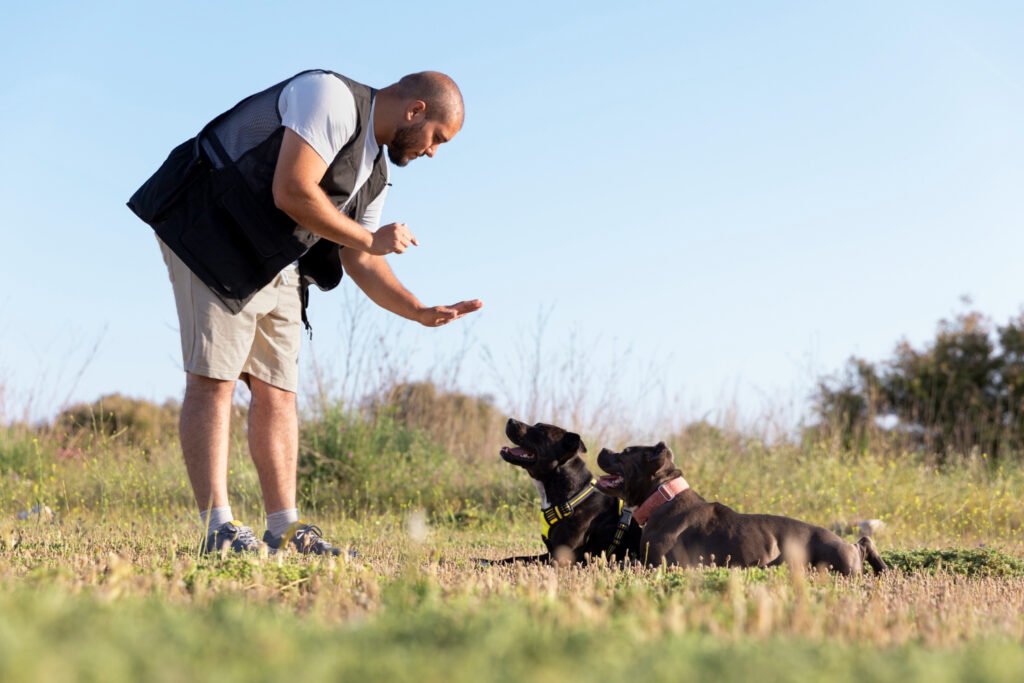
Aggressive dog board and train programs not only address behavioral issues but also aim to strengthen the bond between you and your pet. Here’s how you can build a stronger relationship:
During the process of building a stronger bond, it’s essential to maintain patience and understanding:
By incorporating positive reinforcement, patience, and understanding into your training routine, you can strengthen the bond with your aggressive dog and create a happier, healthier relationship.
The incredible journeys of dogs who have undergone aggressive dog board and train programs, and learn valuable insights from experienced trainers:
Gain valuable advice from trainers who specialize in aggressive dog behavior:
Through these real-life success stories and expert tips, you’ll gain inspiration and practical strategies for addressing aggression in your own furry friend with an aggressive dog board and train program.
Curious? Explore related topics in our latest post!
Aggressive dog board and train programs play a pivotal role in transforming the behavior of aggressive dogs. These programs not only help in managing aggression but also foster a stronger bond between the dog and its owner. Remember, every dog deserves a chance at a happy and peaceful life, and with the right aggressive dog board and train program, this is entirely possible. This concludes our exploration into the world of aggressive dog training, and we hope it has provided valuable insights for all dog owners out there.
3 replies on “Aggressive Dog Board and Train: Fix or Fiction?”
Very informative. Thanks
[…] Aggressive Dog Board and Train: Fix or Fiction? […]
[…] shyness and fear aggression: while shy dogs tend to withdraw from new situations, dogs with fear aggression may react defensively. Understanding this difference is key to effective socialization. Socializing […]